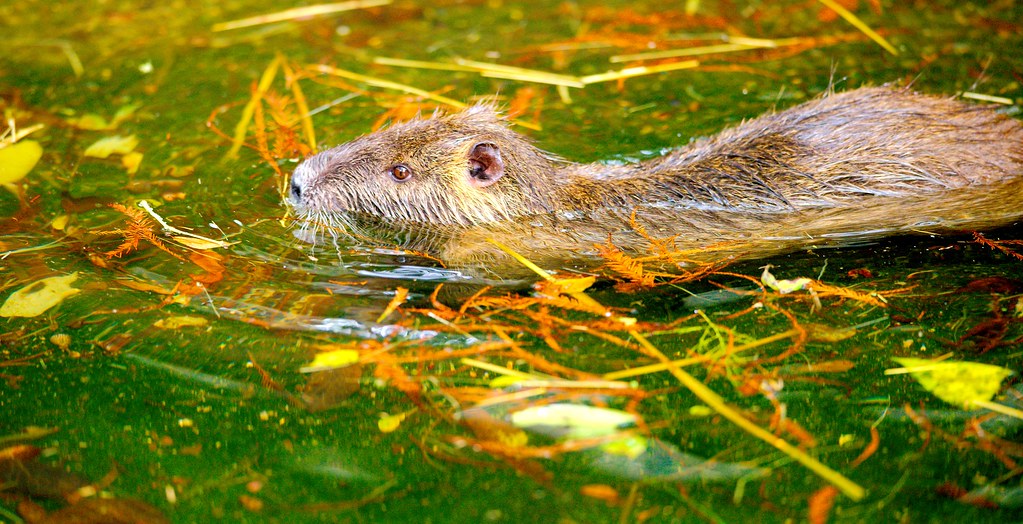This is the first actual nutria I’ve seen, which means I get to tell the story about confusing South American mammals.
It is not uncommon for native peoples to use different classification systems than is used by the Western-educated post-colonial developed countries. This shouldn’t come as a surprise because the way they interact with these animals is very different. Let’s start with the naming.
In English, German, Chinese (various variants), and Russian, this animal is called the “nutria”. However, in Spanish, the word “nutria” refers to what we call the beaver. Since this is confusing, in Spanish, this animal is called the “coypu”, based on the Mapuche language used in Chile and Argentina. In French, it’s a “ragondin”. But, just to make things confusing, in Dutch, it’s a beverrat. Secondary names in German, Italy, and Swedish include “biberratte” (beaver rat), sumpfbiber (swamp beaver), castorino (little beaver), or sumpbäver (marsh/swamp beaver).
OK, so far we know that it’s beaver-like but that it’s not actually a beaver. Now we get to talk about religion.
As some of you know, there is a rather major religion that is now popular in Central and South America … but the path to its popularity wasn’t exactly straightforward. One aspect of that religion when it was being spread throughout the new world was that people were expected to fast on Friday and/or Lent (various reasons for this exist, but I couldn’t find a definitive answer as to why). In practice, “fasting” didn’t mean then what it means today. The point was to avoid eating warm-blooded mammals. In practice, this meant eating fish.
Now, fish just isn’t equally available to everyone world-wide, but rituals matter. At this point, there are numerous stories about what happened. There are stories about native villages refusing conversion because the fish in their rivers weren’t safe to eat. There are stories about missionaries unable to meet the Lenten requirement, and one involving the Bishop of Quebec. All of these stories involve petitions being sent to the Vatican asking for permission to eat things other than fish.
The obvious solution, of course, was for the church to declare that these animals were, in fact, fish. The two decently documented stories I could find specifically allow beavers and capybara to be fish. However, because of the linguistic drift, according to the people I talked to Costa Rica, Nicaragua, and Peru (not a huge sample, admittedly), the pope has declared “nutria” to be fish … with whatever definition of nutria you prefer, be they beaver, capybara, coypu, otter, or any other rodent found in the water. This is why they’re okay to eat on Fridays and during Lent, but only if you’re native to Central or South America.
I was told that white people don’t eat them whatever day it happens to be.
